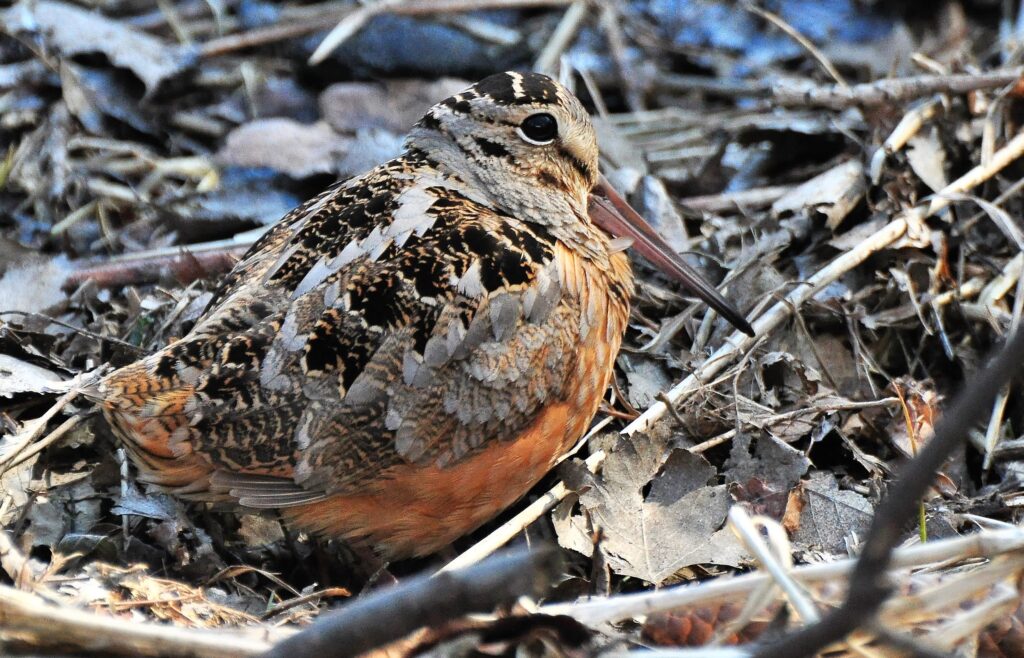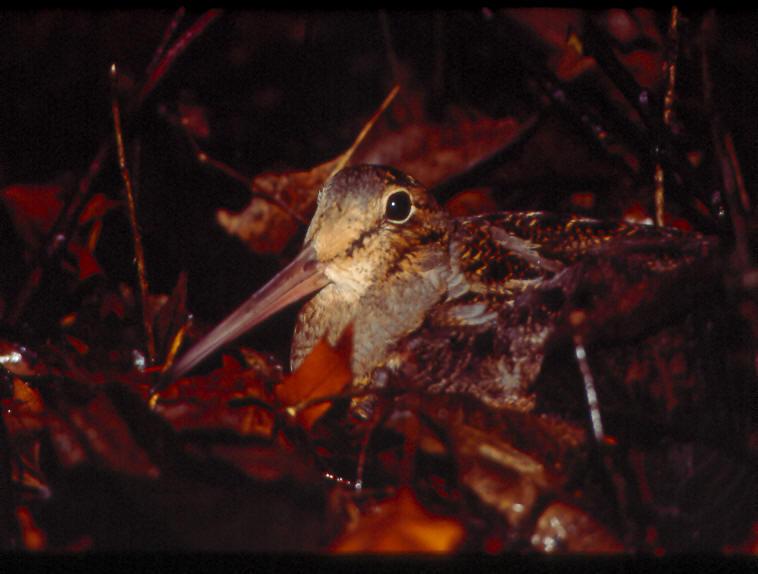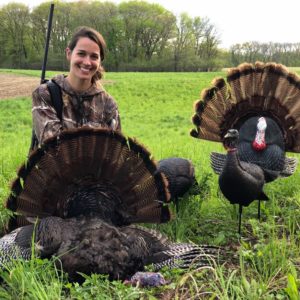Photography courtesy of Lowell Washburn, all rights reserved.
The courtship antics of the American woodcock is one of the Iowa woodland’s most remarkable spring rituals. The prelude to these daily performances begins as solitary males – also known as Timberdoodles — begin emitting a series of off key, nasal calls referred to as “peenting”. There is no other sound that compares.

Then, as the sunset sky explodes into a dazzling array of color; the long-billed, oddly-shaped bird suddenly rises from the forest floor. Spiraling ever higher, the creature soon becomes a speck, hovering hundreds of feet above its woodland home. Once the flight reaches its zenith, the bird folds its wings and begins a meteor-like descent, hurtling toward earth in a breathtaking series of zigzagging maneuvers. As the fall continues, the bird’s speed remains unchecked. Certain death seems a heartbeat away. Finally, and just a mere split second before impact, the creature extends its wings and gently flutters to the sod in a perfect two-point landing. Dropping its wings and fanning its stubby tail, the bird struts across the forest floor like a miniature gobbler. The dazzling return to earth is soon followed by resumed peenting and more spiraling flights as males attempt to attract the attention of prospective mates.
Although thousands of northbound woodcock migrate through Iowa each spring, only a scant handful will stay to nest. Bedecked in elegantly camouflaged plumage, a resting woodcock is nearly impossible to detect. Although most residents will never catch so much as a single glimpse of one, there are exceptions. My friend Paul Willis, for example, is the only person I know who has enjoyed the good fortune of spotting a group of four newly hatched, still in the nest woodcock chicks. The event occurred on his northern Iowa prairie farmstead.

Feeding almost exclusively on earthworms, Timberdoodles travel by night and spend their days probing the moist forest soils with their ridiculously long bills. Woodcock have delicately shaped pink feet equipped with long slender toes that enable foraging birds to detect the slightest underground movements of their prey.

I once enjoyed the memorable pleasure of observing a woodcock feeding near the edge of a small woodland stream. Slowly and deliberately tiptoeing across the damp turf, the ‘doodle would balance on its front foot while steadily rocking back and forth. Whenever an underground movement was detected, the woodcock would instantly come to a halt. Assuming a statue-like pose, the bird appeared to be ‘listening with its feet’. Finally convinced of what it was “hearing”, the bird would suddenly plunge its bill deep into the soil and extract a wriggling ‘crawler which was promptly swallowed in one long gulp. A dozen probes produced an impressive total of eleven earthworms.

 Susan Judkins Josten
Susan Judkins Josten Rudi Roeslein
Rudi Roeslein Elyssa McFarland
Elyssa McFarland Mark Langgin
Mark Langgin Adam Janke
Adam Janke Joe Henry
Joe Henry Sue Wilkinson
Sue Wilkinson Tom Cope
Tom Cope Kristin Ashenbrenner
Kristin Ashenbrenner Joe Wilkinson
Joe Wilkinson Dr. Tammy Mildenstein
Dr. Tammy Mildenstein Sean McMahon
Sean McMahon